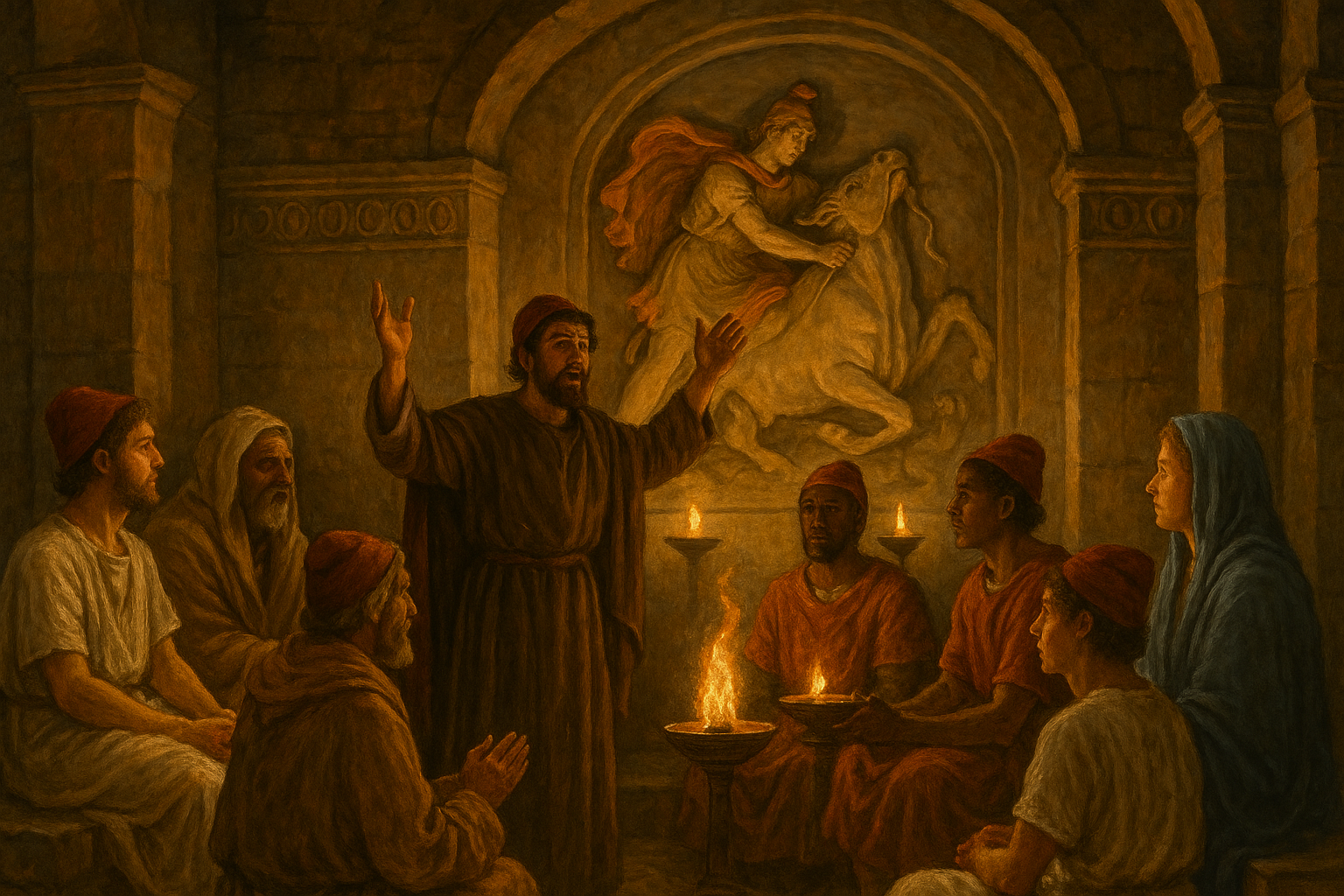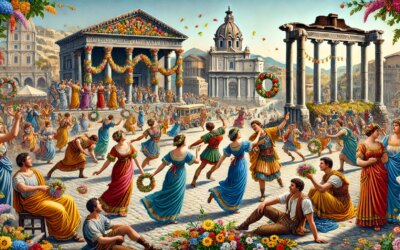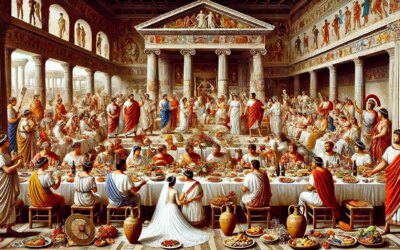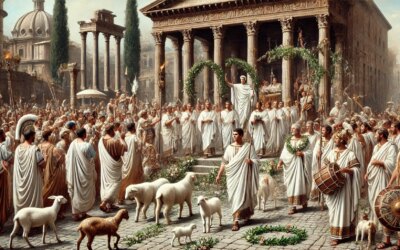Origins of a Secret Faith
By the mid-2nd century AD, the Roman world was brimming with religious diversity. Among the myriad deities and philosophical schools emerged a particularly mystifying faith known as Mithraism. Rooted in ancient Persian worship of the god Mithra, the Roman version centered on the deity’s heroic act of slaying a cosmic bull. While precise dates of its introduction to Rome remain debated, archaeological evidence places the establishment of the first mithraeum (underground temple) around 100–120 AD. From these hidden sanctuaries, the cult’s secretive rites drew the allegiance of soldiers, merchants, and administrators alike.
Mithraea: Hidden Temples Beneath the City
Mithraic worship took place in specially constructed subterranean temples called mithraea. Often carved within urban buildings, quarries, or even beneath the floors of private homes, these sanctuaries replicated rocky caves, reflecting the god’s mythic birth. Indoors, benches lined narrow chambers, leading toward a central relief known as the tauroctony, depicting Mithras plunging his dagger into a bull’s neck. Illuminated by oil lamps, initiates gathered here for graded ceremonies that echoed themes of death, rebirth, and cosmic struggle.
Initiation and Hierarchy: Rites of Passage
Membership in the cult was exclusive and fragmented into seven grades, each marked by specific symbols and functions. Initiation ceremonies reportedly involved rituals of purification, fasting, and symbolic mock battles. Inscribed graffiti and statuettes found in mithraea outline the grades:
- Cacus (Raven): The novice stage, learning the cult’s basic tenets.
- Nymphus (Bride): Entry into communal feasts and common meals.
- Miles (Soldier): Association with martial virtues—likely the most common rank among legionaries.
- Leo (Lion): A symbol of courage, marked by ritual adornments.
- Perses (Persian): Acknowledged connection to the cult’s eastern origins.
- Pater (Father): A senior overseer of ceremonies and keeper of loyalty.
- Pater Patratus (Father of Fathers): The highest office, responsible for initiating others.
Soldiers and Senators: A Cross-Section of Roman Society
Mithraism’s appeal lay in its military ethos and promise of personal salvation. Inscriptions reveal a strong presence in Roman legions stationed across the Empire—from Vindobona (Vienna) to Carthage. Soldiers found in Mithras a deity embodying courage and camaraderie, fitting for life on campaign. Yet the cult also attracted senators, equestrians, and provincial governors who sought networks of trust essential for business and politics. Unlike public cults—Jupiter’s Capitoline worship or the Imperial cult—Mithraism’s secrecy reinforced solidarity among initiates.
Ritual Feasts and Cosmic Symbolism
Communal meals played a central role. Initiates shared bread and wine, reenacting Mithras’s feast with the sun god Sol, his divine companion. Astronomical motifs—Zodiac carvings, representations of Sol invictus—adorned mithraea, aligning the believer with cosmic order. These symbols underscored a dual loyalty: to Rome’s earthly dominion and to a spiritual cosmos beyond empire.
Rivalry and Decline in the Face of Christianity
By the 4th century, Mithraism faced growing competition from Christianity. Both religions offered promises of salvation and community, but Christianity’s missionary zeal and imperial endorsement under Constantine (4th c. AD) gradually overshadowed mystery cults. Edicts from Theodosius I outlawed pagan rites in 391 AD, sealing the fate of Mithraea. Nevertheless, their architectural remains—well-preserved mithraea in Rome’s San Clemente and along the Caelian Hill—offer today’s scholars a window into a once-thriving secret religion.
Legacy of Mithras: Brotherhood Beneath the Earth
Despite its disappearance, Mithraism influenced later fraternal societies with graded initiations, secret rituals, and symbolic gatherings. Modern Masonic and esoteric traditions sometimes claim inspiration from ancient mystery religions like Mithraism. Yet beyond lineage, Mithras’s true legacy lies in illustrating how Romans sought meaning, identity, and fellowship in a vast, cosmopolitan empire—often in the dim glow of an underground sanctuary.






